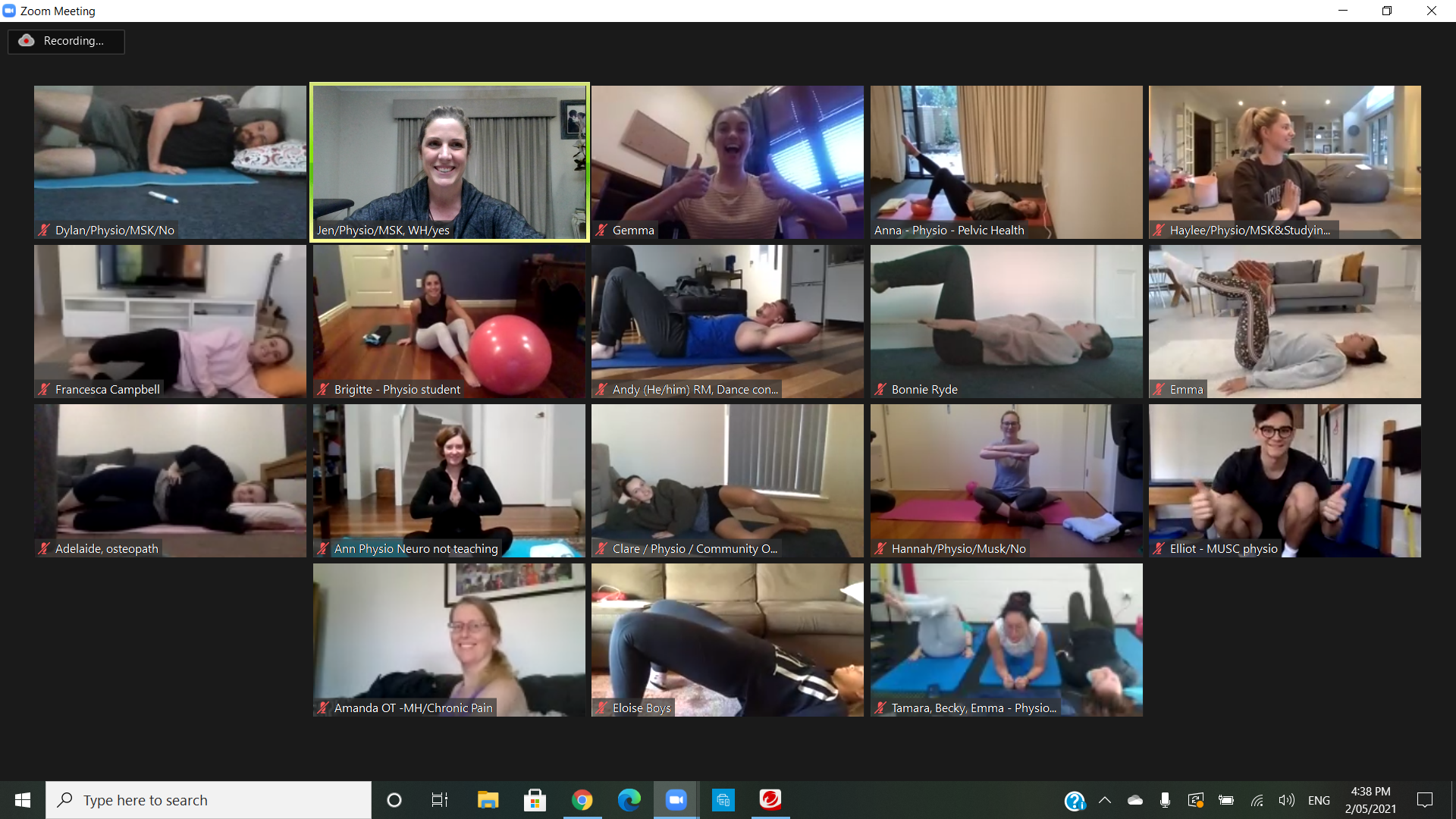Pilates Mythbusters
As both Pilates teachers and course presenters, we here at Unite Health have heard our fair share of Pilates myths. These not only negatively influence the population but can also give a false impression about what Pilates can achieve for your body. Let’s debunk the 9 most common myths surrounding Pilates.

- Pilates requires incredible flexibility
Increasing flexibility can be a happy consequence of dedicated Pilates practice, however, it is certainly not essential that you start here. Many instructors enjoy incredible flexibility but you may be seeing the result of years of practice. In fact, the APPI Pilates teacher training courses will help you as both an instructor and a participant to tailor your practice to both the very flexible and the very inflexible. So if you think that you need to bend like a pretzel to enjoy Pilates, you are wrong! Pilates will meet you where you are at and enhance both strength and flexibility as you progress.
2. Pilates only works your ‘core’
It is true that Pilates can be a fantastic ‘core’ workout. But, what do we mean by ‘core’? Is that just the 6 pack? No way! The APPI definition of the core encompasses the:
a) supportive core - deep abdominals, deep lower back muscles, pelvic floor and the diaphragm.
b) strength core - the 6 pack and the muscles and fascia (connective tissue) of the trunk.
c) extended core - the muscles and fascia of the arms and legs. Addressing all aspects of our core means that we are actually addressing the entire body from head to little toe.
3. Pilates is girly
This myth may have originated from Joe Pilates’ work with ballerinas. But did you know that Joe initially worked with convalescing soldiers during WWII? - how manly is that! The truth is that Pilates can be as ‘girly’ or as ‘manly’ as you desire and it all depends on how it is delivered. APPI Pilates training courses equip our instructors with the skills necessary to deliver courses that suit the participants' needs. Whether you play football or have recently joined a synchronized swimming class, Pilates is for you.
4. Pilates is too easy and does not work
This would only be true if not taught well!
As Pilates is considered a low-impact form of exercise, it can be confused with being easy. When taught well, Pilates should meet the required level of intensity of the participant but never push people into a zone of intensity that is unsafe. If a class is suited to your needs, after 2-3 weeks of attendance, you should feel change starting to take place within your body. These changes can include, increased muscle tone, increased muscle strength, improved posture, improved balance and improved awareness of better movement. APPI accredited Pilates courses (delivered both face to face and online) will ensure that you are teaching high-quality Pilates classes that achieve excellent results.
5. Yoga and Pilates are the same
Pilates and Yoga do have similarities but differ both in their ethos and their intent. Yoga originated from Hidu religious practices and remains grounded in spirituality. Its poses mimic ancient poses of worship and when linked within a class attend to both the physical and the spiritual needs of the body.
Pilates was designed in the 1920s by Joseph Pilates as a way of building strength through the teaching of movement patterns. It focuses on improving physical deficits and does not attend to any spiritual needs.
Some of the beautiful movements seen in Yoga and Pilates may be similar and achieve both strength and flexibility but these two forms of exercise are inherently different. APPI provides courses in both Pilates and Therapeutic Yoga training.
6. Pilates needs fancy equipment
If you have attended a Pilates mat class, this may seem crazy to you as all that you probably used was your mat and a towel. However, some Pilates studios have wonderful pieces of large equipment that can be used to provide resistance to specific Pilates exercises.
The truth is that 2 forms of Pilates exist.
- Mat Pilates, as the name suggests, is performed on a mat and requires minimal equipment.
- Equipment Pilates is a very specialised form of Pilates that utilises large equipment such as a Reformer. Large equipment is often found in clinical Pilates studios and can achieve fantastic outcomes. If teaching equipment classes is of interest to you, APPI offers both clinical and non-clinical Pilates certification courses on equipment.
7. You can’t do Pilates if you are injured
Pilates is used every day by many APPI trained health professionals to rehabilitate patients to regain function and fitness. With specific skills, trained clinicians have the ability to modify exercises to suit the individual and thereby avoid flaring up injuries and aid recovery.
8. You need to be strong to do Pilates
Just like flexibility, strength gains are an expected outcome of regular Pilates practice. Skinny arms and chicken legs are all welcome to Pilates classes but may not look this way for long. As strength improves, exercise difficulty will also increase so that the body is continually and progressively challenged.
9. Pilates will make me lose weight
Although weight loss may occur as a result of Pilates practice, this is not a specific focus of this type of exercise and cannot be guaranteed.
Most beginner PIlates classes are very slow (to help you perfect your form) and thus may not burn an excessive amount of calories. However, as the intensity increases, the calorie burn will also increase, muscle tone will improve and weight loss may be seen. If weight loss is your specific goal, combine your Pilates practice with good nutrition and another form of cardiovascular exercise, such as regular walking and then you can expect even greater weight loss results.
Hopefully you now have a better understanding of what Pilates is and the fantastic effect that Pilates can have on every unique body.